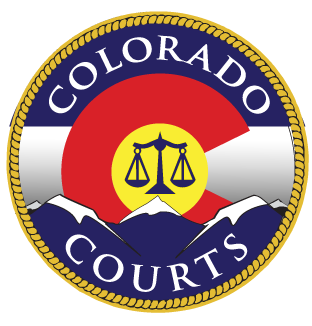About Residential Foreclosures
Foreclosure happens when the lender or bank tries to get money due on a home loan from the borrower. The lender or bank tries to get the money by asking the court for an order to sell the property that was in the loan. The lender or bank may do this because the borrower quit making payments on the home loan.
For more information about residential foreclosures, review Rule 120 or Rule 120.1 of the Colorado Rules of Civil Procedure (CRCP) and/or the Colorado Revised Statutes §38-38-101, et seq.
How to Respond to Residential Foreclosure Paperwork
First, read all of the paperwork you receive about the foreclosure to understand the following:
- The person or business that started the case is the Plaintiff. You are the Defendant.
- Where is the case filed (in which court)? Look at the front page of the paperwork you received for the location of the court case. If the case is not in the county where your home is located, you could ask the court to move the case to the county where your home is located.
- Why was the case started? Did you stop paying your mortgage? Was there some sort of payment processing error?
- When is the court hearing? This date will be in the paperwork. Plan to attend court that day.
Forms and Paperwork Required
Use the forms link above to download and complete JDF 621 Verified Response to a Rule 120 Notice. Any interested person, most often the homeowner, may fill out JDF 621 Verified Response to a Rule 120 Notice. You are the Defendant. The bank or lender is the Plaintiff. For detailed instructions on completing this form, review JDF 620 Instructions for Filing a Response to a Rule 120 Notice.
Paperwork Tips
Include on JDF 621 why you don't think the judge should order that the property be sold to cover the money owed on the loan.
If the case is not in the county where your home is located, you may ask the court to move the case to the county where your home is located. Make this request on your JDF 621.
If you or anyone on the loan is in the military now, mention this in your response. The judge will see if the Service Members Civil Relief Act applies to your foreclosure.
If you filed for bankruptcy, talk with a bankruptcy attorney. Federal law may stop the residential foreclosure case while your bankruptcy is going on.
Evidence that supports the response, such as paperwork showing a payment plan or cancelled checks, can be attached to the response. These attachments are called "exhibits".
Complete the Certificate of Mailing on the bottom of page two of the form to show the judge that you will mail a copy of the form and any exhibits to the Plaintiff's attorney.
Make copies of the completed form and exhibits. You may want to keep a copy of the form and exhibits for your records.
How to Submit Paperwork to the Court
- Take your completed form to the clerk at the counter in the courthouse. Give the original, completed JDF 621 Verified Response to a Rule 120 Notice and one copy of your exhibits to the court clerk in the courthouse where the foreclosure case was started.
- Pay the filing fee. If you do not think you can afford the filing fee, fill out form JDF 205 Motion to File Without Payment and Supporting Financial Affidavit and JDF 206 Finding and Order Concerning Payment of Fees to request a waiver of the filing fee, or visit our File Without Payment section for complete information.
- Mail a copy of the completed JDF 621 Verified Response to a Rule 120 Notice with any exhibits to the Plaintiff's attorney. The completed form and any exhibits must be given to the court and mailed to the Plaintiff's attorney not less than 7 days before the hearing date listed on the paperwork you received about the foreclosure.
Residential Foreclosures Filing Fees | |
|---|---|
| Defendant, Respondent (Not Filing a Crossclaim or Counterclaim - Answer Only) | $222.00 |
If you do not understand this information, you may want to contact an attorney.
After Paperwork Is Filed
Important: If you do not fill out JDF 621 Verified Response to a Rule 120 Notice and give it to the court within the required time period, a court hearing may not be held. The response must be submitted to the court at least 7 days before the hearing. The hearing may also not be held if the borrower does not fill out and give a Response to the court.
What Happens Next?
The court will look at the Motion (i.e., court filing asking for a hearing) filed by the Plaintiff(s). The judge will check to see that the case was started in the correct county (where the property being foreclosed is located). The judge will also look at the facts that the Plaintiff(s) mentioned in their Motion. The judge could decide to order that the home be sold without a hearing. The judge could also decide that a different hearing date should be set.
In general: The hearing determines if the lender or bank (Plaintiff) can foreclose on your home and have it sold at a public auction.
On Your Court Date
Be on time or early for your court hearing.
Have all of your information, completed paperwork, exhibits (lease, Notice, etc.), and any other evidence with you. Evidence can include a copy of the lease, copies of emails between the bank and you, copies of payment receipts, paperwork showing a payment plan or cancelled checks, photographs of the property, etc. Organize and label each piece of evidence as exhibits that you can share with the other person and the judge.
If you are the Plaintiff, label your exhibits with numbers starting with 1.
If you are the Defendant, label your exhibits with letters starting with A.
Make copies of your exhibits for the other person and for the judge. You will have to pay for any copies that the courthouse staff makes for you.
Turn off your cell phone and respect everyone in the courtroom. Refer to the judge as "Your Honor" or "Judge".
During the Hearing
The Plaintiff's attorney will tell the judge why the bank or lender should be able to foreclose on your home.
You tell the judge why the lender or bank should not foreclose on your home. Focus on the facts. Present any exhibits to the judge and call witnesses to provide important information about your case.
Ask your witnesses questions so that they can testify (speak to the court). The Plaintiff's attorney may object to or ask the judge to ignore exhibits and witnesses that you try to bring up in your case.
After the Hearing
If the judge orders that your home be sold, your home may be sold at an auction by the public trustee in the county where you live. You may still owe the bank or lender money if the auction does not bring in enough money to pay the balance on the home loan.
How to Issue a Subpoena
A Subpoena must be served no later than 48 hours prior to the appearance date.
A Subpoena to Appear is a document issued by the clerk at the request of one of the parties to require the appearance of a witness at a deposition, hearing, or trial.
A Subpoena to Produce (Subpoena Duces Tecum) is a document issued by the clerk at the request of one of the parties to require the witness to bring certain documents or evidence in their possession with them to a deposition, hearing, or trial.
A court hearing or trial must be set prior to requesting the clerk to issue a Subpoena.
For additional information, please review C.R.C.P. 345.
 Colorado Judicial Branch
Colorado Judicial Branch
